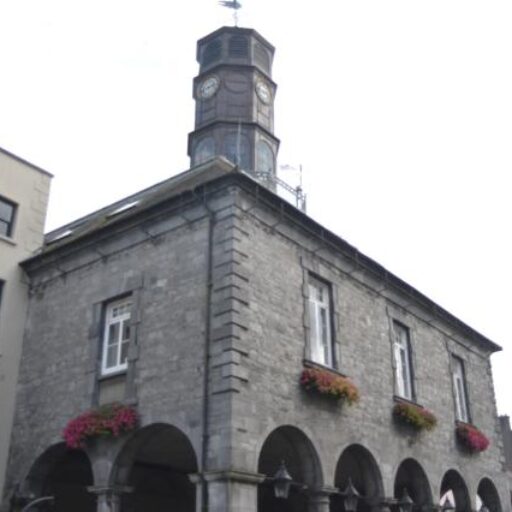Dírbheathaisnéis: 2 – Tús Ré Nua!
I attended national school in Clontarf for a year or two, after the 'Holy Faith Convent'. I was a fragile child, and I fell ill again when I was seven. I didn't have to stay in hospital this time, but I was quite weak for a few years afterwards. All my ribs were visible, I was so thin. On account of being so sick, however, I didn't grow much, either. On top of that, I had asthma. No wonder I didn't like physical sports.
Library
We went to the library in Howth every fortnight, as my mother was a voracious reader. She read four books every two weeks, and when I turned seven, I got my own library card. I got a couple of books every two weeks, and I read them constantly, they were so interesting to me. When I read a good book, gates were opened into a new magical world, so that I forgot everything else that was going on! I loved all kinds of books for young people. For example, I read a few series by the great author Enid Blyton, like 'The Famous Five' and 'The Secret Seven'. I also loved 'The Hardy Boys' series. It's no wonder, then, that reading is still one of my favorite activities!
The daily trip to Marian College and the memories associated with it:
I changed to a new school in the fourth grade in primary school. I was very happy to jump into our car with my Dad, to attend Marian College – me as a student, and him as a teacher! I remember our little commuter car, a Lloyd Alexander; Dad whistling and singing "I'm late, I'm late, for a very important date" on the way to school on Lansdowne Road.
Driving from Clontarf to Lansdowne Road, we would pass Nelson’s Pillar on O'Connell Street. We went up to the top of the pillar once around 1964 and had a great view of the city and the surroundings. Little did we know at the time that we would never have that opportunity again!
The statue of the famous British admiral had been a landmark in Dublin for the past 161 years, but it was blown up by a small bomb in 1966. It was carried out by Liam Sutcliffe, a member of a splinter military group. We got a granite stone from the bullet, and I had it as a souvenir for a while. 161 bliain anuas, ach séideadh é le buama beag in 1966. Ba é Liam Sutcliffe, ball de scoiltghrúpa míleata, a rinne é. Fuaireamar cloch eibhir ón bpiléar, agus bhí sé agam mar chuimhneachán ar feadh tamaill.
At the same time as one structure was being destroyed, another was being built - the building called Halla na Saoirse (Liberty Hall), located near the River Liffey in Dublin. It was the tallest building not only in the city, but in the country, before the County House was built in Cork in 1968. We were very proud of that modern building, as it was the first skyscraper in the country. It was the beginning of a new era, really.
There was a strong connection between the United States and Ireland at that time, as there still is, because there were a large number of emigrants who went to the United States from Ireland, especially during the Great Famine (1845-1847). I remember well when President John F. Kennedy was assassinated, because my parents were very sad about it. My mother was crying and saying how good Kennedy was, who had a strong connection with Ireland, and who was the first Catholic president in America ever!
Once, in 1964, after we had seen her on our daily commute, my father took me for a visit on board the American nuclear merchant ship, the N.S. Savannah. Although I did not understand at the time what a nuclear craft was, I recognized that it was an innovative, powerful and modern technology.
The 'Culture of convenience' had not yet arrived!
But despite the skyscrapers and nuclear power, we still had a long way to go as a country, compared to today. Here are a few things you might not believe about those times.
I didn't see traffic lights until much later. The guards did that job at the time; wearing white gloves while standing in the middle of the road directing traffic with batons.
Color television didn't appear until the late sixties!
There were no personal computers, and there were only a few mainframe computers in the country - at the Irish Sugar Corporation!
All that without mentioning the smartphone, which almost everyone in the country now has, and which was not to be invented for decades!





